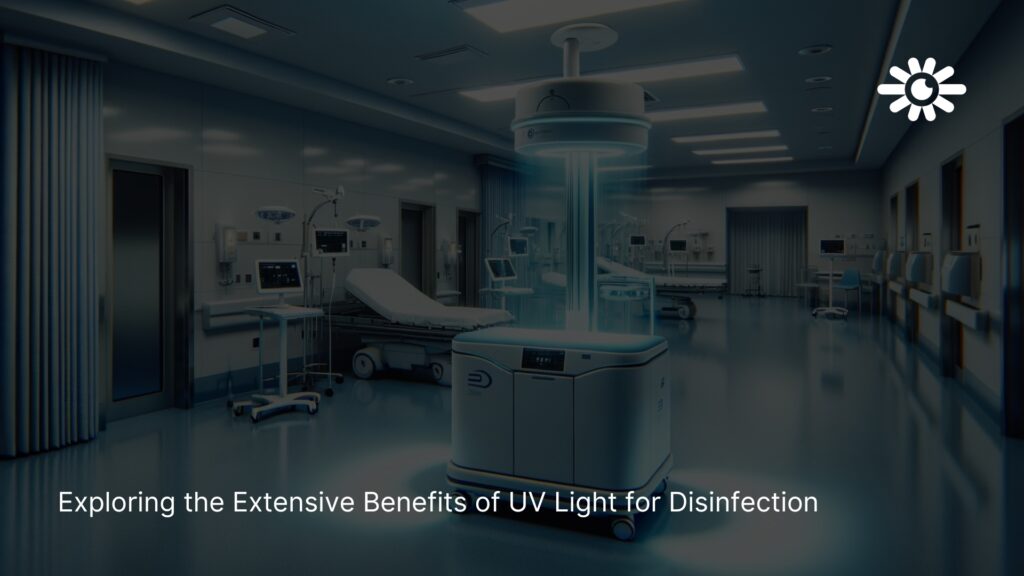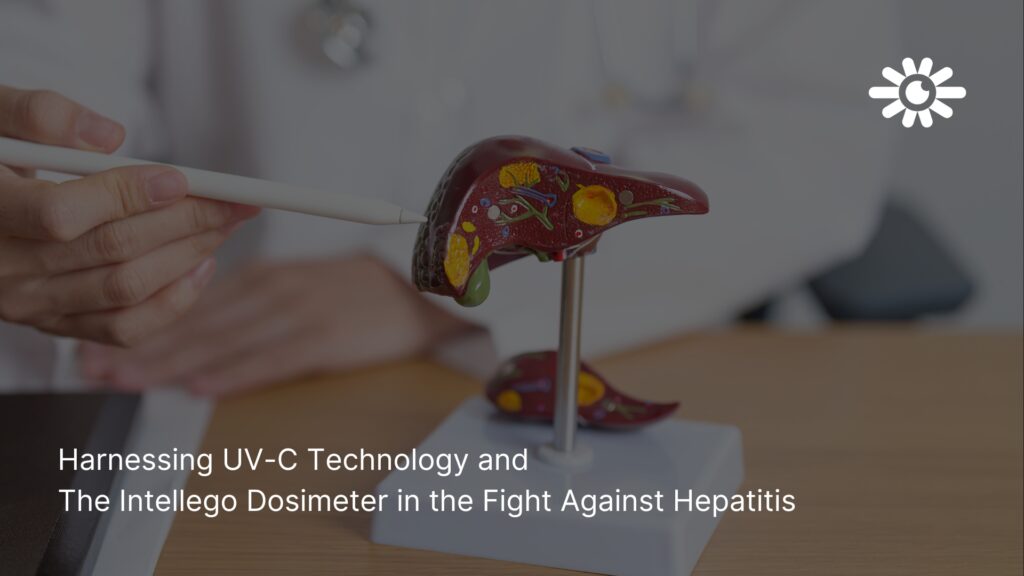The Benefits of UV Technology for Healthcare Disinfection
In recent years, ultraviolet (UV) technology has emerged as a powerful tool for disinfection in the healthcare industry. UV light can destroy the DNA and RNA of harmful microorganisms, making it an effective and efficient method for reducing the risk of healthcare-associated infections. In YUVIO’s first blog, we will explore the various benefits of UV technology for healthcare disinfection and its potential to expand upon how healthcare facilities maintain a clean and safe environment for patients and staff. Understanding UV Technology UV light is an invisible form of electromagnetic radiation to the human eye. It is categorised into three types based on wavelength: UV-A, UV-B, and UV-C. UV-C, a wavelength range of 200 to 280 nanometers, is particularly effective at disinfection as it can inactivate bacteria, viruses, and other pathogens by disrupting their DNA and RNA, rendering them unable to replicate. This makes UV-C technology a valuable asset in the fight against healthcare-associated infections. Advantages of UV Technology for Healthcare Disinfection 1. Broad-Spectrum Disinfection UV-C light can deactivate many microorganisms, including bacteria, viruses, and fungi. This broad-spectrum disinfection capability makes it an essential tool for healthcare facilities aiming to maintain a clean environment. 2. Rapid and Efficient UV technology enables rapid disinfection, which can inactivate microorganisms within minutes of exposure. This efficiency is crucial in healthcare settings where quick turnaround times are essential for maintaining high levels of hygiene and preventing the spread of infections. 3. Targeted Disinfection UV technology can target specific areas and surfaces that are challenging to reach with traditional cleaning methods. This includes areas often overlooked or difficult to disinfect, such as intricate medical equipment, patient rooms, and high-touch surfaces. 4. Complementary to Traditional Cleaning UV technology complements traditional cleaning methods by providing additional protection against pathogens. UV disinfection can help healthcare facilities achieve comprehensive sanitation when used in conjunction with routine cleaning protocols. Manual Disinfection Paired With UV Disinfection: Manual cleaning poses challenges such as human error, inconsistent practices, and limitations in effectively removing pathogens, including antimicrobial-resistant superbugs. Factors like inadequate contact time, the complexity of hospital environments, and the risk of cross-contamination further contribute to its shortcomings. In contrast, UV technology offers a targeted approach, addressing hard-to-reach areas and intricate equipment often overlooked in manual cleaning. This technology provides a more thorough and consistent disinfection process, potentially mitigating the limitations associated with manual cleaning. Applications of UV Technology in Healthcare 1. Hospital Rooms and Surgical Suites UV technology is utilised to disinfect patient rooms, operating theatres, and surgical equipment, reducing the risk of healthcare-associated infections and ensuring a safe environment for patients undergoing medical procedures. 2. Medical Equipment and Devices UV disinfection is employed to disinfect medical instruments, devices, and tools, mitigating the risk of cross-contamination and maintaining the highest standards of cleanliness in healthcare facilities. 3. Air and Water Purification UV technology is harnessed for air and water purification systems, helping to eliminate airborne pathogens and microbial contaminants, thereby enhancing the overall quality of air and water within healthcare environments. Future Implications and Innovations The ongoing advancements in UV technology are paving the way for innovative applications in healthcare disinfection. From the development of portable UV disinfection devices to the integration of UV-C technology in HVAC systems for continuous air disinfection, the potential for UV technology to improve healthcare cleanliness and infection control is vast.As healthcare facilities prioritize patient safety and infection prevention, UV technology is an essential solution for enhancing disinfection practices and reducing the risk of healthcare-associated infections. With its broad-spectrum efficacy and rapid disinfection capabilities, UV technology is vital for ensuring a safer and healthier environment within healthcare settings. Embracing Validation In The UV Industry Implementing a proper validation protocol is essential to ensure the efficacy and reliability of UV disinfection equipment in healthcare settings. A robust validation protocol involves establishing procedures to verify that the UV equipment consistently delivers the required germicidal dose to achieve the desired level of disinfection. This includes regular testing and calibration of the UV devices to confirm their performance and adherence to specified disinfection standards. By integrating a thorough validation protocol into the disinfection routine, healthcare facilities can enhance the potential of their UV equipment. A comprehensive validation process assures that the UV technology is operating optimally, thereby maximising its effectiveness in deactivating harmful microorganisms. Furthermore, it instils confidence in the healthcare staff and patients by demonstrating a commitment to maintaining a clean and safe environment through scientifically validated disinfection practices, giving you the Golden Standard Of Disinfection. The benefits of UV technology for healthcare disinfection are clear: it offers an efficient, targeted approach to disinfection, helping healthcare facilities maintain a high standard of cleanliness and safety. As UV technology continues to evolve, its impact on healthcare-associated infections and patient outcomes will likely be substantial, solidifying its position as a valuable asset in pursuing enhanced infection control and patient care. With its potential to revolutionise how healthcare facilities approach disinfection, UV technology represents a significant advancement in the ongoing effort to safeguard the well-being of patients and staff within the healthcare industry. Contact our UV experts to schedule a free 30-minute consultation to see how UV can improve your healthcare facility. Contact an expert today
The Benefits of UV Technology for Healthcare Disinfection Read More »



